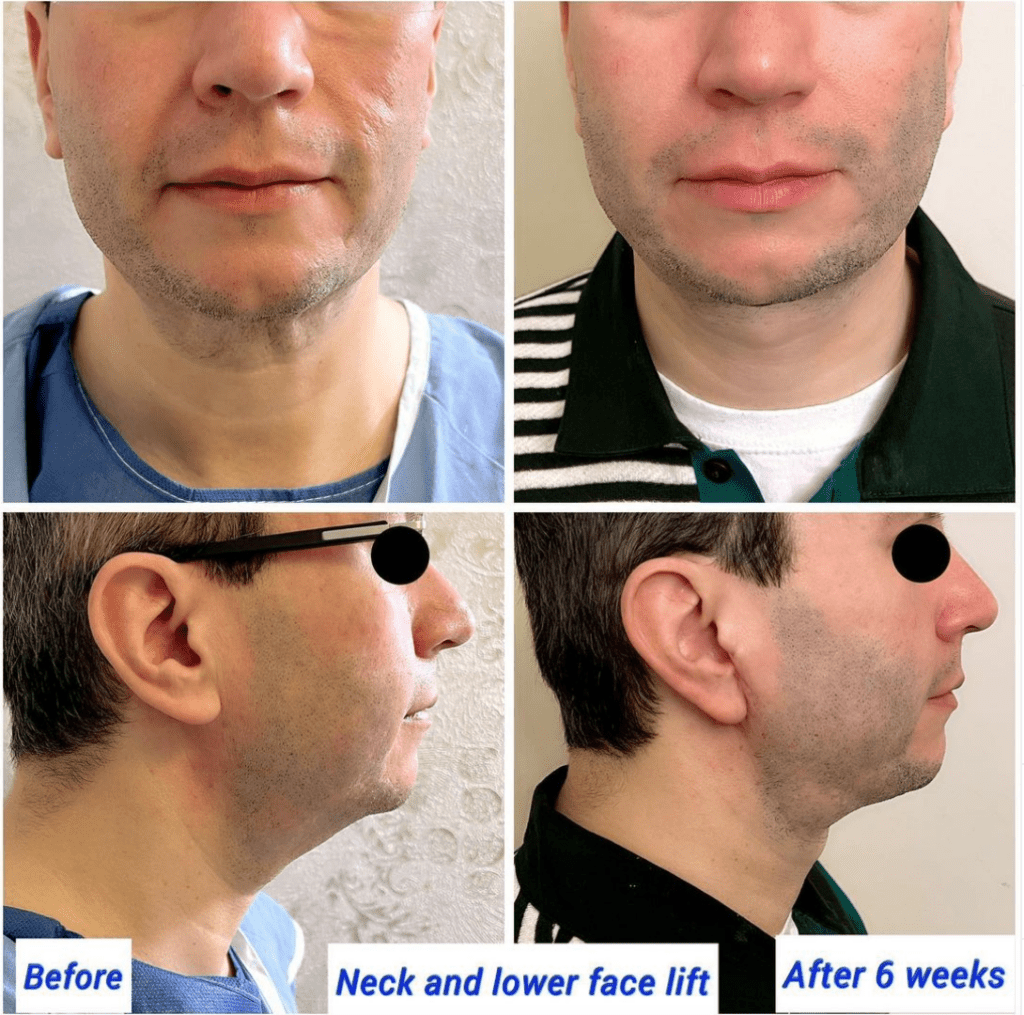A facelift is one of the most common cosmetic procedures in the UK. Deciding to have the procedure is a rather personal decision and you might have a lot of concerns. One of the biggest questions that most people have is when is the best age to get a facelift?
What is a Facelift?
A facelift or a rhytidectomy helps create a more youthful appearance. The procedure reduces skin folds and sagging skin on the jawline and cheeks. It can also help reverse other changes that may occur on your face due to ageing.
During the procedure, the plastic surgeon pulls back skin flaps on each side of your face. The tissue below the skin is then altered to help contour the face for a more youthful look and shape. The doctor will then remove any excess skin to eliminate other signs of ageing.
Most of the time, a facelift is combined with a platysmaplasty or neck lift. This procedure helps reduce sagging skin on the neck as well as fat deposits. While a facelift can help to reverse the effects of ageing, it doesn’t eliminate wrinkles and fine lines. At the same time, a facelift will also not fix any damage caused by excessive sun exposure.
Types of Facelift
There are different types of facelifts depending on your concerns and the results you’re looking to achieve. Here’s a breakdown of the various facelift techniques:
- Traditional facelift – when you think of a facelift, this is probably what comes to mind. It’s a full facelift and is aimed at those with severe signs of ageing around the neck and midface.
- Mini facelift – this is ideal for those with more minor signs of ageing. It uses more minimal incisions so the downtime is quicker in comparison to a traditional facelift.
- Neck lift – in most cases, your plastic surgeon will pair a neck lift and a facelift. This is because signs of ageing tend to be visible in the lower face and the neck. To get the most out of a facelift, it’s useful to tighten the neck region too.
Facelift Before and After

Why Get a Facelift?
As you grow older, the shape and appearance of your face change. Your skin loses elasticity due to a decrease in fat deposits. A facelift can help reverse the visible signs of ageing. These include:
- Tightening sagging skin on the cheeks
- Removing excess skin on the jawline
- Deepening the folds of skin from the corners of the mouth to the sides of the nose
- Tightening excess skin and removing excess fat in the neck if you also want a neck lift.
When is the Best Age to Get a Facelift?
If you are considering a facelift, you must be wondering if you are of the right age to undergo the procedure. Usually, a facelift is not recommended for anyone under 30. Most of the time, a facelift works best if you are in your 40s, 50s or 60s as it’s the age where signs of ageing become more visible.
The best age to get a facelift, however, is when you feel you need one. We all age differently, and while rare, you might start showing signs of ageing before you are even 40. Genetics, environmental habits and your skincare routine all contribute to your skin texture and tone.
There is, therefore, no right age when you should decide to have a facelift. Instead, consider a facelift when you start noticing signs of ageing. Also, you may opt for a facelift if the visible signs of ageing bother you. You may also consider a facelift if other non-surgical treatments are no longer working.
Signs that You Could Benefit from a Facelift
The reason that a facelift works better for those who are over 40 is that this is the age when the signs of ageing are more noticeable. It’s those pesky signs of ageing like skin sagging and hollowing that a facelift is targeting. So, there’s no point in considering a facelift if you don’t have those visible signs.
Sagging Facial Skin
A facelift can help combat sagging skin, wrinkles, and facial lines. It’s difficult to target excess or sagging skin with non-invasive methods. If you’re especially concerned with sagging skin either on the face or neck, a facelift is one of the most effective ways to tackle this issue.
Hollowing on the Face
Hollowing in the face or having a shrunken appearance are typical signs of ageing. This can make you look older than you are and tired. By combing a facelift with fat grafting you can tighten the face and neck while adding volume to the face to turn back the clock. The result is a fuller, more youthful-looking appearance.
How Long Does Recovery Take For A Face Lift?
You can expect your facelift recovery to take about 4-6 weeks. After a month, you can resume most normal activities. You will continue to heal over the next couple of months. After 2 months, all bruising and swelling should be gone and you can enjoy your new face.
To help you prepare for your facelift recovery, check out our guide to washing your hair after a facelift and how to get the best sleep following your procedure.
Facelift at the Harley Clinic London
The best way to know if you can have a facelift at your age is to talk to an experienced plastic surgeon. Ask all the right questions and share your concerns to help you make the best decision.
Here are some examples of the types of questions to ask during your cosmetic surgery consultation:
- How much is a facelift in the UK?
- What type of techniques do you use?
- What sort of results can I expect to achieve?
- What is your experience why my procedure?
- Can I see results from previous patients?
To start your facelift journey today, book a consultation today at The Harley Clinic on Harley Street, London.













